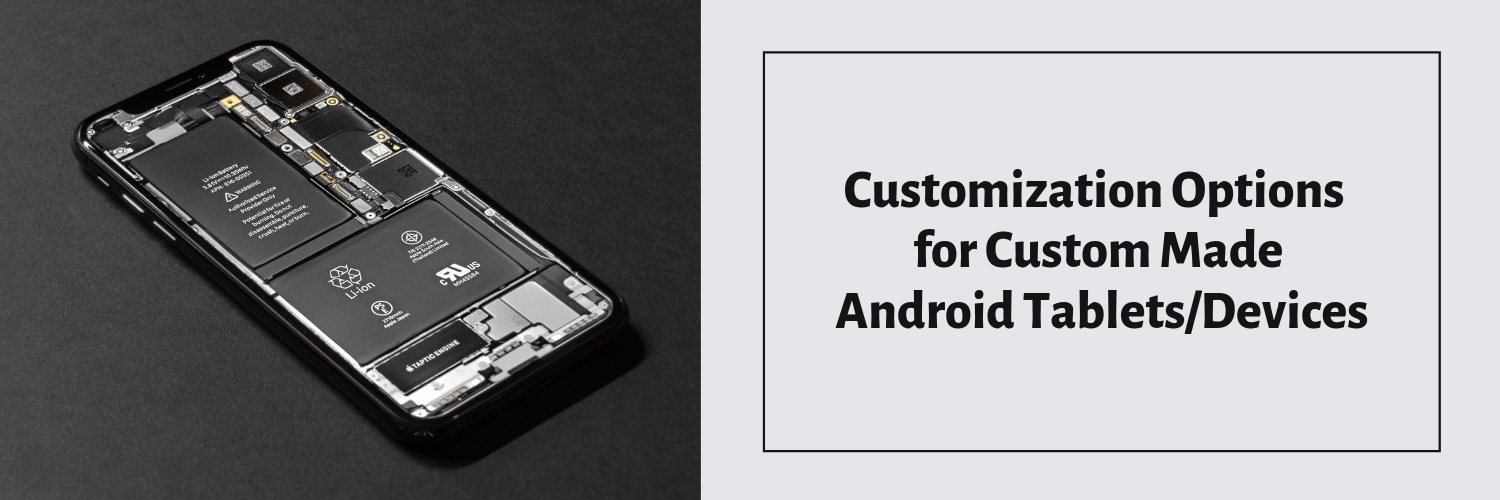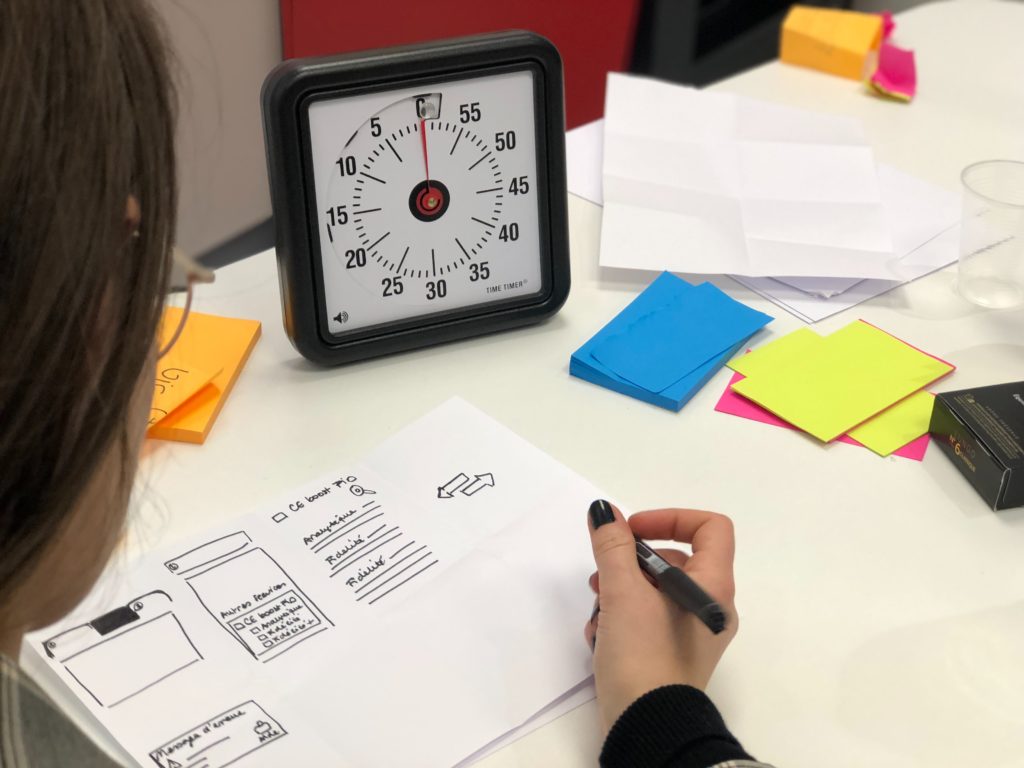Hatch designs, develops, and manufactures custom android tablets and smartphones – providing a full service focused around your ultimate goal.
Companies planning to have a custom Android tablet manufactured need to firstly decide what customization to make and understand the implications of their custom requirements.
When conceptualizing the first version of a custom Android tablet, smartphone or other device, the underlying thought should be ‘how to create the most value with the least amount of customization’.
OEM manufacturers must start any project by intimately learning about the client’s ultimate goals for product usage in order to contribute to the decision making process.
Applying this thought process will result in the quickest and lowest cost development process.
Read on to learn about how different kinds of customization affect the reliability, speed to market, and price of manufacturing a custom tablet.
Usually, custom Android devices start from modifying an existing standard design, rather than making a custom device from scratch.
Standard Android devices, meaning basic tablets and smartphones that run a plain version of Android, require a lot of technical attention to operate reliably before they’re ready for mass production.
Starting a custom project with a device that’s already stable is usually the best option, but before embarking on any custom product project, whether for Android-based electronics, a hair comb or whatever, one must have a clear justification why a unique product delivers more value than an existing standard one.
For example, if your company makes a ‘digital photo frame’ app, an app which displays photos, could your software work on a standard Android device or would custom Android-powered hardware clearly improve the user experience?
Whenever possible I recommend starting out with any easy to buy, generic low-cost Android device sold through a big-box retailer and having a small group of beta users try the app using that standard device. Use their first-hand user feedback to guide the decisions about what to customize.
In the beginning, making the app stable and getting real user feedback is a much better (and lower) use of resources than pursuing the custom dream based exclusively on board room ideas and a healthy round of funding.
After making the app’s user experience great a company may decide that making their own digital photo frame hardware would be a great idea. This same logic can be applied to any Android medical device, Android IoT product, and all other use cases.
If external electronics are part of the finished product try connecting a stand-alone version to the Android device with Bluetooth before integrating into one product, just for the beta testing phase at least.
Once ready to start developing a custom Android device you should know what different customization options mean to your timeline and bottom line.
Note that any customization requires careful attention, clear communication, and most importantly client approval before implementing into mass production.
Simple Tablet Customization
Key points: Low risk of substantial delay. Low cost impact. Simple testing procedure.
Examples and explanations:
- Silk screen printing (brand logo, button/port notation, product info, etc.)
- Customer should send a design file format like AI, PSD, or similar to the OEM / ODM manufacturer and then check a physical sample. Before sending samples to a customer the supplier should send a photo of the silk screen in case that reveals any problems. Finding a problem with a photo is faster and cheaper than finding a problem after sending the physical item. Usually sending just the case sample is easier and cheaper than sending a finished product (unless other aspects of the product require checking).
- On screen graphics (start up/shut down image or animation, wallpaper, pop up graphics, etc.)
- Usually JPG, PNG file formats or per supplier instruction works well. If you’re not sure just ask to avoid wasting time. If the customer already has a device sample the supplier can send updated Android firmware after the new on screen graphics have been added for the customer to install locally instead of having to send a physical device. The suggestion of sending updated firmware instead of sending a new sample applies to any firmware/software updates. The OEM / ODM supplier should send written instructions with screen shots to show how to run the firmware installation process or send a video if the client needs more precise guidance.
- Packaging artwork
- If the packaging structure uses a generic design then the supplier should send a die cut outline image to the customer. The customer will design the packaging graphics within the die cut. The customer can even print out the design on an office printer or a professional printer to check it before sending to the supplier. If the customer’s packaging employs a custom structural design they should provide the structural die cut and artwork together with details about the material to use for packaging to the custom hardware supplier (who can also manage packaging). Custom packaging structural design is only a simple customization if the material and design concept remain consistent with the generic packaging that the supplier usually uses.
Moderate Tablet Customization
Key points: Requires 2-3 weeks delay to prepare properly. Adds cost to product. Noticeably increases testing requirements. If done improperly could negatively impact usability of the product. Changing these requirements after starting development results in higher risk of mistakes and longer delays.
Examples and explanations:
- Custom Android tablet / device accessories (charging adapter, protective case, ear phones, user guide, etc.)
- Standard tablets from Chinese factories come with a charging adapter and USB cable. Some come with a user guide. If the customer wants an extra long USB cable or a wall/car charging adapter with specific certifications or electric output these items must be specially sourced, tested, and presented to client for approval before purchasing it for mass production.
- Generic commodity hardware components (screen resolution or brightness, battery, camera, speakers, mic array, etc.)
- Many peripheral components are interchangeable, however changing between different versions, even if the specifications are the same, often requires modifications to other parts of the product. For example, two screens with the same size and resolution may have different thickness or brightness, not to mention different drivers. A difference in thickness requires modification to the casing for the screen to fit properly. The different drivers require writing a new driver and optimizing it. Changes to brightness require different passive components on the PCBA to support different electric current requirements.
- Customization of Android firmware SDK (any functionality modification of the standard Android OS build)
- Being open source most aspects of the Android operating system firmware are modifiable. Most changes to the OS of a stable system brings risk of new software bugs that could negatively impact product stability. When an Android device doesn’t obtain Google Mobile Services (GMS) certification, certain functionality that comes with GMS must come from alternative sources. For example, non-GMS devices won’t have Google’s location service for getting location through wi-fi or cell tower triangulation nor Google Play for downloading or updating apps. Changing menus, locking apps, auto-run of custom launchers are some of the many examples of OS customization. Your OEM / ODM supplier can usually handle the custom Android firmware requirements that fall into this category.
Advanced Tablet Customization
Key points: Custom changes that define the product. The majority of development resources go into realizing these changes and usually take 1-2 months to finish; possibly longer for stable implementation.
Examples and explanations:
- Adding non-standard peripheral electronics (adding new ports such as Ethernet, VGA, serial, adding sensors, or wireless protocols, etc.)
- Adding sensors or other non-standard electronics such as special data inputs, relays, or wireless protocols is generally not a problem if this design requirement is clear from the beginning. These added electronics will affect the case design, size of PCBA, and possibly which components go on the main PCBA. Integrating non-standard electronics into the design requires clear design specifications from the beginning due to the high impact on size, electronics, and software. Making these changes of this nature after development starts results in possibly having to redesign the whole product.
- Custom case design (rugged, waterproof, unique materials, precision requirements, etc.)
- Making a case that withstands harsh or wet environments requires precise engineering and several rounds of modification to the case. A device that may be dropped should have a case which uses softer materials to absorb the impact and be designed in the right way, for example using a thicker PCB, to make more durable. For devices that will run constantly or be used in a hot environment making sure there’s enough ventilation in the case ensure longer durability. Making these changes of this nature after development starts results in possibly having to redesign the whole product.
- Customization of Android kernel
- Some software or hardware changes require modification to the Android kernel. The kernel refers to the code that integrates the hardware with the software. Routine changes to the kernel like making drivers for different screens or cameras can usually be quickly handled by qualified engineers. Changes to the kernel require support from the IC manufacturer (such as Rockchips, Mediatek, Allwinner, Spreadtrum, etc) to implement for more complicated requirements, especially those that affect process logic. For example the logic behind connecting to mobile phone towers. Changes to logic processing usually require high volume or high development fee to convince an IC manufacturer to undertake. This process is also slow and inflexible since it requires help from a limited number of special engineers.
For any custom project, the initial goal must be to deliver a working first version in end users hands as soon as possible, even if this means using a standard (non-customized) tablet or smartphone, as mentioned above.
Speed is more important than perfection in the first instance of getting a product made.
The breakdown above gives you a solid foundation to understand the work necessary to accomplish different kinds of common customization requirements.
Use this knowledge when balancing what features are needed and which would be ‘nice to have’.
New software features can be introduced after a product is made, and sometimes even in end user hands, while physical features which influence the case or hardware are more difficult to introduce after development begins.
No matter what kind of change is made, thinking through how any change to one aspect of the product will affect other aspects of the product is necessary.
Testing the device after a change is also necessary. Hatch executes thorough initial testing when new devices become ready.
Even with minor defects, Hatch will send the samples so the client can test other aspects of the product.
The problems that Hatch finds are communicated to the client before they receive the samples so they know what problems to expect and that a solution is coming.
Following internal testing and comments from the customer Hatch will make another round of samples.
Once samples are ready for the real world final testing by a controlled group of end users usually produces additional improvement opportunities.
By nature, custom changes create possibilities for complications. Using an efficient process to develop smartly, find complications as quickly as possible, and fix them in a timely manner defines any project’s success.
Wondering how to get your custom made Android device into production? Hatch may be the answer.







